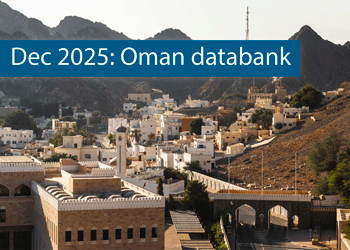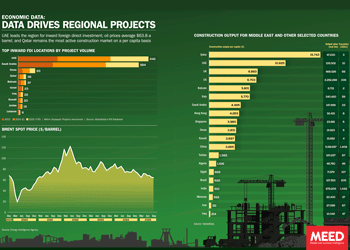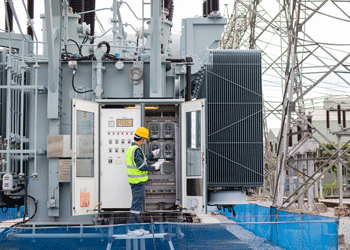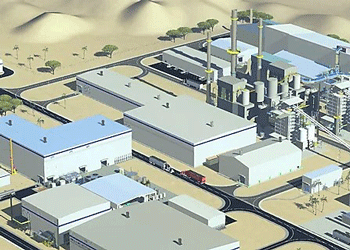UAE banks seize the moment
11 April 2024

After a surge in profits in 2023, UAE lenders have a positive outlook for this year. Strong capital buffers are expected to move even higher, while robust liquidity conditions provide a solid base for growing loan books.
The UAE economy’s revival, meanwhile, continues. That will support lenders’ loan quality, with borrowers’ ability to repay loans steadily improving – albeit from a high level of problem loans, which account for an estimated 4-5% of total loans.
The key factor in borrowers’ improved repayment ability is the UAE’s impressive non-oil performance, which has resulted in diminishing corporate problem loans.
With legacy Covid-era challenges now substantially reduced for the UAE private sector, banks’ non-performing loan (NPL) ratios have declined across the board.
Exposure to the property sector, considered a strategic vulnerability for lenders, is not proving problematic. Those developers with indebtedness issues are in the process of settling those.
For example, in December 2023, Dubai-based developer Union Properties announced an AED875m ($238.3m) debt repayment to a local lender, as part of a restructuring of its loans.
According to Moody’s Investors Service, the UAE banks’ coverage ratio, defined as loan-loss reserves as a proportion of problem loans, reached 103% in 2023 – meaning the existing stock of property-related loans is now fully covered.
The ratings agency said this level is comparable to other highly rated GCC banking systems, providing a healthy extra layer of protection to core equity against expected losses and strengthening total loss absorption capacity.
However, there is a limit to the level at which NPLs will decline because of large legacy exposures and large restructurings emanating from previous cycles, where there was volatility in the non-oil space.
Last year, non-oil growth in the UAE was around 5%. That drove greater, repayment capacity from borrowers, which was very visible in the headline NPL ratios of the banks that pretty much declined on average, says Badis Shubailat, a bank analyst at Moody’s Investors Service.
“Still, there is some form of floor level to this decline because of the legacy exposures, and large restructurings that emanated from the previous credit cycles, during which we saw volatility in the non-oil space.”
This structural feature keeps the UAE at a disadvantage from a comparison standpoint to the other markets regarding asset quality indicators.
The broader profit picture in the UAE underscores the benign conditions confronting banks. The combined net income of all UAE banks increased by 54.1% in year-on-year terms in 2023, to AED76.9bn ($20.9bn).
High interest rates and supportive operating conditions ensured that asset yields (at 6.0% according to Moody’s) outpaced the cost of funding (3.7%). Banks managed to preserve low-cost current and savings accounts (CASA) and supported wider margins at 2.6% (compared to 2.2% in 2022).
Profit boost
Results from the largest UAE lenders show a massive profitability boost last year. The country’s largest lender by assets, First Abu Dhabi Bank (FAB), saw 2023 net profit reach $4.5bn, an increase of 56% on an underlying basis compared to 2022.
Total assets increased 5% to $318bn. Dubai’s largest bank, Emirates NBD, reported a 65% increase in profit last year to AED21.5bn ($5.9bn), with a 16% increase in its asset base propelled by strong CASA increases.
According to Moody’s, the four largest banks – FAB, ENBD, Abu Dhabi Commercial Bank and Dubai Islamic Bank, which together accounted for around 74% of total UAE banking assets as of December 2023 – reported a combined net profit of $14.3bn in 2023, up from $9.6bn in 2022.
Analysts expect sustained profitability in 2024, given widening net interest margins and improving credit growth. Even anticipated interest rate cuts from the US Federal Reserve are unlikely to hit UAE banks hard, especially as these are only due to kick in in the second half of this year. Moreover, any interest rate reductions will likely be gradual.
These improving metrics prompted Moody’s in mid-March to change the outlook for the UAE banking sector in 2024 to positive from stable.
The profitability improvement will also support banks’ capital ratios. Fitch Ratings expects the average CET1 ratio (post-dividend payments) to remain in the 13.5%–14% range, as the impact of lending growth will be broadly compensated by internal capital generation. Operating profits provide a solid cushion against any increase in the cost of risk, said the ratings agency.
That UAE banks are mainly funded by low-cost CASA deposits – considered ‘sticky’ – is a positive for the sector’s liquidity position. Last year, noted Moody’s, customer deposits made up 78% of UAE banks’ funding base. In contrast, the reliance on market funding is a moderate 17.7% of tangible banking assets.
Funding positions are supported by higher deposits from government-related entities (GREs), whose revenue performance has been sufficiently strong to allow them to deleverage to a greater degree.
Last year’s aggregate deposit performances from the top 10 banks, as reported by consultancy Alvarez and Marsal, showed that deposits grew 13.4% in 2023, while aggregate loans and advances increased by only 9%. Consequently, the loan-to-deposit ratio for these banks slipped 3.1 percentage points to 74.9%.
Some banks’ bottom lines face challenges. In March of this year, Dubai announced a 20% annual tax on foreign banks operating there, excluding those based in the Dubai International Financial Centre (DIFC). However, the Dubai authorities said the corporate tax rate will be deducted from the annual tax that foreign banks pay.
Volatile sectors
There remain vulnerabilities related to the construction and contracting sectors, which Moody’s notes are more volatile. It expects pockets of risks in the small- to medium-sized business segments because of high interest rates, particularly for smaller banks.
Exposure to foreign economies such as Turkiye and Egypt is more of a risk for the larger UAE banks.
“There is a foreign exposure story with large UAE banks, mainly in markets that have strong trade ties with the region, namely Egypt and Turkiye,” says Shubailat. “Those open avenues for growth and profitability diversification, but also present relatively less benign and more challenging environments.”
Such risks should easily be absorbed in the grand scheme of things. With overall conditions remaining supportive and healthy profits being generated, the UAE’s banks will look to expand loan books and capture the full growth potential of a vibrant domestic market.
The latest news and analysis on the UAE includes:
 > Non-oil activity underpins UAE economy
> Non-oil activity underpins UAE economy
> Dubai real estate boosts construction sector
> UAE and Kenya launch digital corridor initiative
> UAE in talks to invest in European nuclear power infrastructure
> Abu Dhabi’s local content awards surge to $12bn
> Dubai tunnels project dominates UAE pipeline
> UAE marks successful power project deliveries
> UAE is dropped from financial grey list
Exclusive from Meed
-
 Navigating financial markets amid geopolitical fragmentation
Navigating financial markets amid geopolitical fragmentation28 December 2025
-
 Oman’s growth forecast points upwards
Oman’s growth forecast points upwards24 December 2025
-
 December 2025: Data drives regional projects
December 2025: Data drives regional projects23 December 2025
-
 Local firm bids lowest for Kuwait substation deal
Local firm bids lowest for Kuwait substation deal22 December 2025
-
 Saudi-Dutch JV awards ‘supercentre’ metals reclamation project
Saudi-Dutch JV awards ‘supercentre’ metals reclamation project22 December 2025
All of this is only 1% of what MEED.com has to offer
Subscribe now and unlock all the 153,671 articles on MEED.com
- All the latest news, data, and market intelligence across MENA at your fingerprints
- First-hand updates and inside information on projects, clients and competitors that matter to you
- 20 years' archive of information, data, and news for you to access at your convenience
- Strategize to succeed and minimise risks with timely analysis of current and future market trends

Related Articles
-
 Navigating financial markets amid geopolitical fragmentation
Navigating financial markets amid geopolitical fragmentation28 December 2025

As we move towards 2026, geopolitical fragmentation is no longer a background risk that occasionally disrupts markets.
It has become a defining feature of the global financial landscape. Shifting alliances, persistent regional tensions, sanctions and the reconfiguration of supply chains are reshaping how capital flows, how liquidity behaves and how confidence is formed.
For firms operating in the Middle East, this does not simply mean preparing for more volatility. It means operating in a system where the underlying rules are evolving.
For much of the past three decades, businesses and investors worked within a broadly convergent global framework. Trade expanded, financial markets deepened and policy coordination – while imperfect – created a sense of predictability. That environment has changed.
Today, economic decisions are increasingly influenced by strategic alignment, security considerations and political resilience. Markets still function, but they do so in a more fragmented and less forgiving way.
Shifting landscape
One of the most important consequences of this shift is that risk no longer travels along familiar paths. In the past, geopolitical events were often treated as temporary shocks layered onto an otherwise stable system.
Today, they shape the system itself. Trade flows are influenced as much by political compatibility as by cost efficiency. Supply chains, once optimised for speed and scale, are reorganising into regional or allied clusters. Financial markets respond not only to data, but to narratives about stability, alignment and long-term credibility.
This change places greater pressure on firms that rely on historical relationships to guide decisions. Models built on past correlations – between interest rates and equity markets, or between energy prices and regional growth – are less reliable when markets move between different regimes. The challenge is not simply higher volatility, but the fact that correlations themselves can shift quickly.
Monetary policy adds a second layer of complexity. Major central banks are no longer moving in step. The US, Europe and parts of Asia face different inflation dynamics and political constraints, leading to diverging interest-rate paths.
For the GCC, where currencies are largely pegged to the US dollar, this divergence has direct consequences. Local financial conditions are closely tied to decisions taken by the Federal Reserve, even when regional economic conditions follow a different cycle.
This matters because funding costs, liquidity availability and hedging conditions are shaped by global rather than local forces. When US policy remains tight, dollar liquidity becomes more selective. When expectations shift abruptly, market depth can disappear quickly.
For firms with international exposure, long-term investment plans, or reliance on external financing, these dynamics require careful management. They cannot be treated as secondary macro considerations.
Energy markets further complicate the picture. The Middle East remains central to global energy supply, which means geopolitical events often interact with oil prices and financial conditions at the same time.
When shifts in energy expectations coincide with changes in global interest-rate sentiment, liquidity conditions can tighten rapidly. This interaction is well known in academic research on fixed exchange-rate systems, but its practical implications are often underestimated in corporate planning.
Expanding vulnerabilities
These dynamics expose clear vulnerabilities. Concentrated supply chains are more susceptible to disruption. Financing structures dependent on continuous market access are more exposed to sudden repricing. Risk management approaches that assume stable relationships between assets are more likely to disappoint. Operational risks – particularly in technology and data – are increasingly shaped by geopolitical considerations rather than purely technical ones.
At the same time, the region enters 2026 from a position of relative strength. GCC economies benefit from fiscal buffers, long-term investment programmes and a growing perception of stability compared to other parts of the world. In an environment where uncertainty is widespread, predictability itself becomes valuable. Capital increasingly seeks jurisdictions that combine economic ambition with institutional credibility.
The question, therefore, is not whether opportunities exist, but whether firms are prepared to capture them responsibly. This requires a shift in how future risks are assessed and embedded into decision-making. Linear forecasts and static plans are insufficient when the environment itself can change state. Scenario thinking must evolve beyond optimistic and pessimistic cases to reflect different combinations of geopolitical alignment, monetary conditions, and supply-chain stability. These scenarios should inform capital allocation, not sit in strategy documents.
Liquidity and risk management discipline also become central. In both trading and corporate finance, experience shows that many failures stem not from being wrong on direction, but from being overexposed when conditions change. Scaling risk to market conditions, maintaining funding flexibility and understanding how quickly liquidity can evaporate are essential practices. This is as true for corporate balance sheets as it is for trading books.
Operational resilience must be viewed through the same lens. Supply-chain redundancy, cybersecurity preparedness and data governance are no longer purely operational concerns. They influence financial stability, investor confidence and regulatory trust. In a fragmented world, operational disruptions can quickly translate into financial and reputational damage.
Facing the future
As we approach 2026, leadership in the Middle East faces a clear test. The global environment is unlikely to become simpler or more predictable. Firms that continue to rely on assumptions shaped by a different era will find themselves reacting rather than positioning. Those that invest in disciplined risk management, flexible planning and operational resilience will be better placed to navigate uncertainty and to turn volatility into strategic advantage.
In this environment, risk management is not an obstacle to growth. It is the framework that makes sustainable growth possible.
Ultimately – and this is an often overlooked critical point – none of these adjustments, whether in scenario planning, liquidity discipline, or operational resilience, can be effective without the right human capital in place.
Geopolitical fragmentation and financial volatility are not risks that can be fully addressed through models or policies alone. They require informed judgement, institutional memory and the ability to interpret weak signals before they become material threats or missed opportunities.
Firms that succeed in this environment will be those that deliberately invest in corporate knowledge: building internal capabilities where possible and complementing them with external expertise where necessary. This means involving professionals with the right background, cross-market experience and a proven, proactive approach to risk awareness and governance.
In a fragmented world, competitive advantage increasingly depends not only on capital or strategy, but on the quality of people entrusted with understanding risk, challenging assumptions and guiding decision-making under uncertainty.
 https://image.digitalinsightresearch.in/uploads/NewsArticle/15306336/main.gif
https://image.digitalinsightresearch.in/uploads/NewsArticle/15306336/main.gif -
 Oman’s growth forecast points upwards
Oman’s growth forecast points upwards24 December 2025

MEED’s January 2026 report on Oman includes:
> COMMENT: Oman steadies growth with strategic restraint
> GVT & ECONOMY: Oman pursues diversification amid regional concerns
> BANKING: Oman banks feel impact of stronger economy
> OIL & GAS: LNG goals galvanise Oman’s oil and gas sector
> POWER & WATER: Oman prepares for a wave of IPP awards
> CONSTRUCTION: Momentum builds in construction sectorTo see previous issues of MEED Business Review, please click herehttps://image.digitalinsightresearch.in/uploads/NewsArticle/15306449/main.gif -
 December 2025: Data drives regional projects
December 2025: Data drives regional projects23 December 2025
Click here to download the PDF
Includes: Top inward FDI locations by project volume | Brent spot price | Construction output
MEED’s January 2026 report on Oman includes:
> COMMENT: Oman steadies growth with strategic restraint
> ECONOMY: Oman pursues diversification amid regional concerns
> BANKING: Oman banks feel impact of stronger economy
> OIL & GAS: LNG goals galvanise Oman’s oil and gas sector
> POWER & WATER: Oman prepares for a wave of IPP awards
> CONSTRUCTION: Momentum builds in construction sectorTo see previous issues of MEED Business Review, please click herehttps://image.digitalinsightresearch.in/uploads/NewsArticle/15306140/main.gif -
 Local firm bids lowest for Kuwait substation deal
Local firm bids lowest for Kuwait substation deal22 December 2025
The local Al-Ahleia Switchgear Company has submitted the lowest price of KD33.9m ($110.3m) for a contract to build a 400/132/11 kV substation at the South Surra township for Kuwait’s Public Authority for Housing Welfare (PAHW).
The bid was marginally lower than the two other offers of KD35.1m and KD35.5m submitted respectively by Saudi Arabia’s National Contracting Company (NCC) and India’s Larsen & Toubro.
PAHW is expected to take about three months to evaluate the prices before selecting the successful contractor.
The project is one of several transmission and distribution projects either out to bid or recently awarded by Kuwait’s main affordable housing client.
This year alone, it has awarded two contracts worth more than $100m for cable works at its 1Z, 2Z, 3Z and 4Z 400kV substations at Al-Istiqlal City, and two deals totalling just under $280m for the construction of seven 132/11kV substations in the same township.
Most recently, it has tendered two contracts to build seven 132/11kV main substations at its affordable housing project, west of Kuwait City. The bid deadline for the two deals covering the MS-01 through to MS-08 substations is 8 January.
https://image.digitalinsightresearch.in/uploads/NewsArticle/15305745/main.gif -
 Saudi-Dutch JV awards ‘supercentre’ metals reclamation project
Saudi-Dutch JV awards ‘supercentre’ metals reclamation project22 December 2025
The local Advanced Circular Materials Company (ACMC), a joint venture of the Netherlands-based Shell & AMG Recycling BV (SARBV) and local firm United Company for Industry (UCI), has awarded the engineering, procurement and construction (EPC) contract for the first phase of its $500m-plus metals reclamation complex in Jubail.
The contract, estimated to be worth in excess of $200m, was won by China TianChen Engineering Corporation (TCC), a subsidiary of China National Chemical Engineering Company (CNCEC), following the issue of the tender in July 2024.
Under the terms of the deal, TCC will process gasification ash generated at Saudi Aramco’s Jizan refining complex on the Red Sea coast to produce battery-grade vanadium oxide and vanadium electrolyte for vanadium redox flow batteries. AMG will provide the licensed technology required for the production process.
The works are the first of four planned phases at the catalyst and gasification ash recycling ‘Supercentre’, which is located at the PlasChem Park in Jubail Industrial City 2 alongside the Sadara integrated refining and petrochemical complex.
Phase 2 will expand the facility to process spent catalysts from heavy oil upgrading facilities to produce ferrovanadium for the steel industry and/or additional battery-grade vanadium oxide.
Phase 3 involves installing a manufacturing facility for residue-upgrading catalysts.
In the fourth phase, a vanadium electrolyte production plant will be developed.
The developers expect a total reduction of 3.6 million metric tonnes of carbon dioxide emissions a year when the four phases of the project are commissioned.
SARBV first announced its intention to build a metal reclamation and catalyst manufacturing facility in Saudi Arabia in November 2019. The kingdom’s Ministry of Investment, then known as the Saudi Arabian General Investment Authority (Sagia), supported the project.
In July 2022, SARBV and UCI signed the agreement to formalise their joint venture and build the proposed facility.
The project has received support from Saudi Aramco’s Namaat industrial investment programme. Aramco, at the time, also signed an agreement with the joint venture to offtake vanadium-bearing gasification ash from its Jizan refining complex.
Photo credit: SARBV
https://image.digitalinsightresearch.in/uploads/NewsArticle/15305326/main.gif

